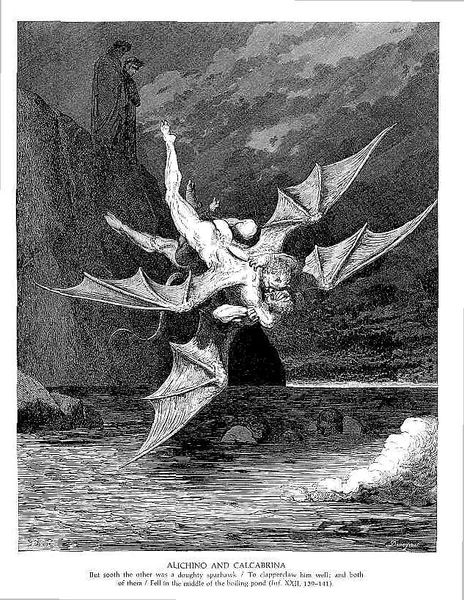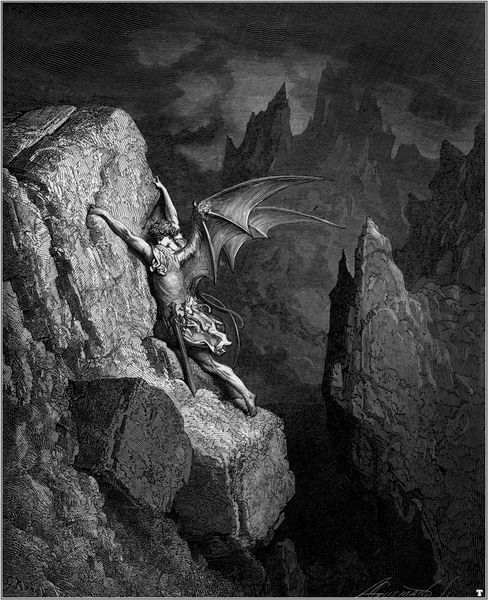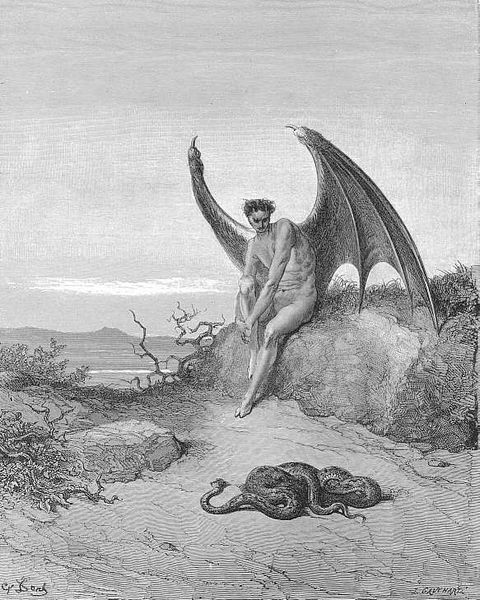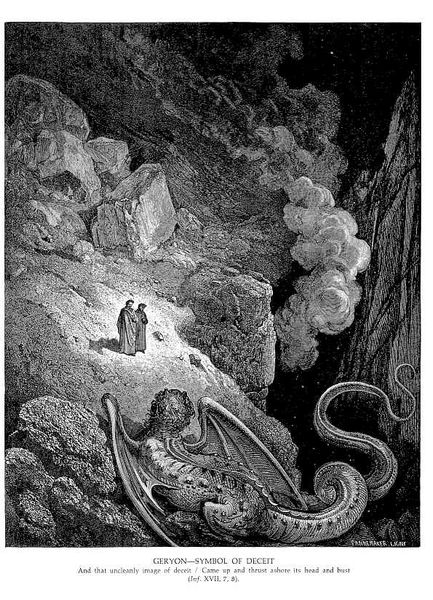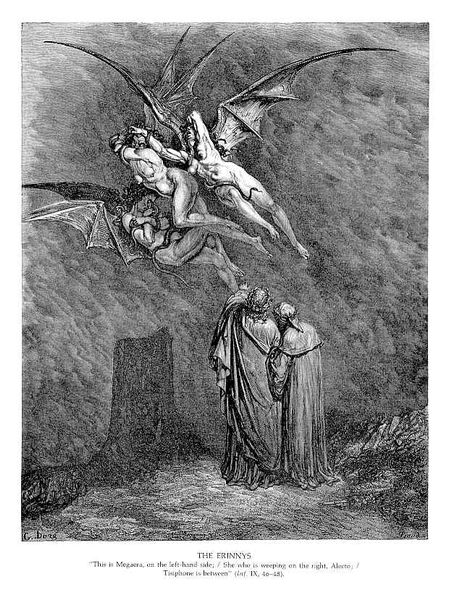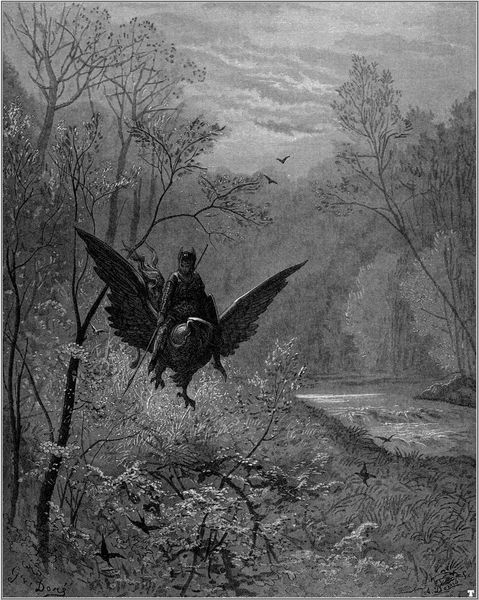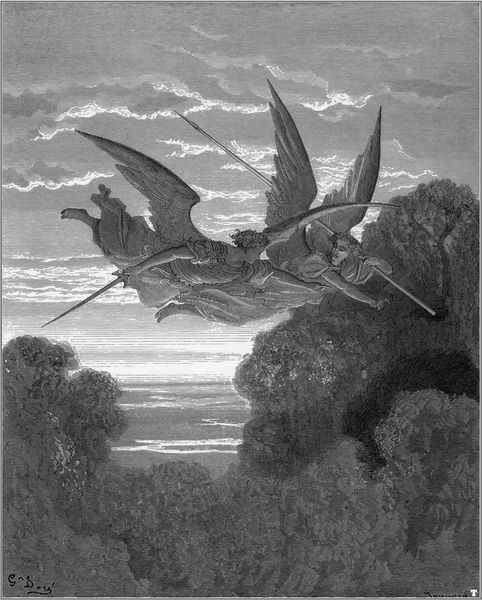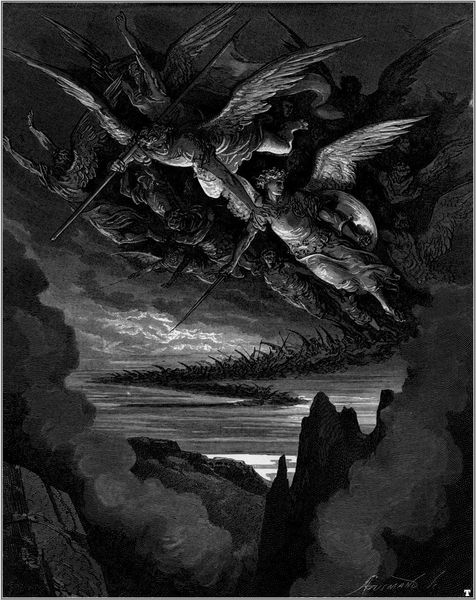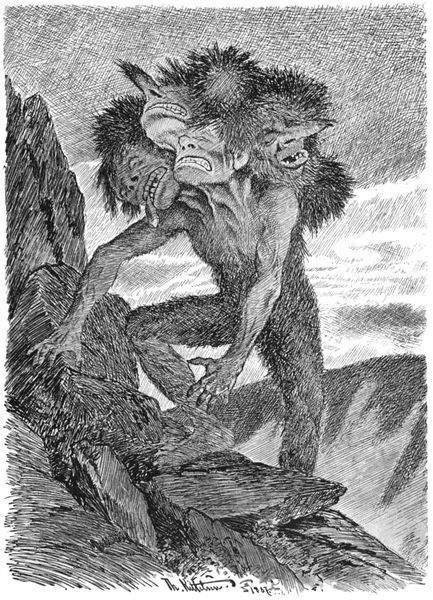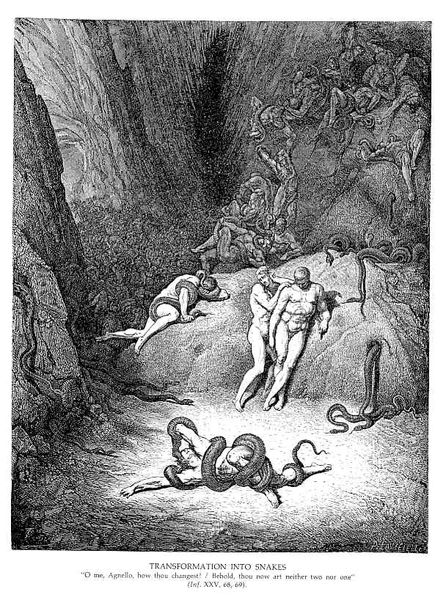
photography, engraving
#
narrative-art
#
landscape
#
figuration
#
photography
#
romanticism
#
black and white
#
line
#
history-painting
#
monochrome
#
engraving
#
monochrome
Copyright: Public domain
Curator: Look at the stark emotional intensity radiating from Gustave Dore’s engraving, "Paradise Lost." The sweeping monochrome treatment definitely conveys its somber nature. Editor: Indeed. The high contrast and the use of deep shadows really amplify the drama, wouldn't you agree? And just the sheer physicality—the textures of the rocks, the weight of that figure. The artist powerfully captured that sense of defeat. I mean, just observe that posture, it looks almost feminine, right? Almost genderless. Curator: That's quite an insightful comment. Dore produced it as part of a series illustrating Milton's epic poem, an incredibly politically charged era in Europe that influenced so many aspects of art production. To frame the discussion of such imagery of angels in opposition let’s keep in mind the historical interpretations of religious authority and societal hierarchy as Milton might be implying with such choices of visual display. Editor: Absolutely. The engraving really benefits from consideration within the sociopolitical forces. The landscape serves not merely as background, but as an oppressive force—a visual representation of the constraints placed on the characters as well. Also it invites us to interrogate issues of power and agency, especially as those were represented through institutions like the Church. How do those elements impact our understanding of narratives of morality and transgression? Curator: Precisely. What Milton achieved, which Dore masterfully interprets here, is to not only render vivid scenes, but question rigid, oppressive structures. This particular scene could also prompt discussions about the societal expectations placed upon men to express a full spectrum of emotion, wouldn't you say? Especially when power and vulnerability can meet. Editor: Definitely. It is through his interpretation and subsequent wide-reaching appeal through published illustration that this visual has so defined "the Fallen Angel." I wonder if, in a sense, Milton sought to challenge not just theological ideas but also the rigid codes of conduct enforced during his period, the expectations of social station for men and the performance of acceptable social hierarchies. Curator: It invites all sorts of challenging re-readings that force a viewer to contend with art as an echo and as a refraction of broader, more crucial narratives. Editor: Indeed, this single image resonates across centuries, demanding we confront complex histories and question fixed perceptions, perhaps one by one, one challenge at a time.
Comments
No comments
Be the first to comment and join the conversation on the ultimate creative platform.
